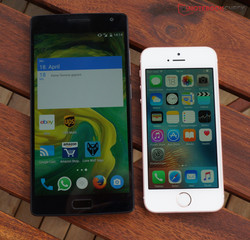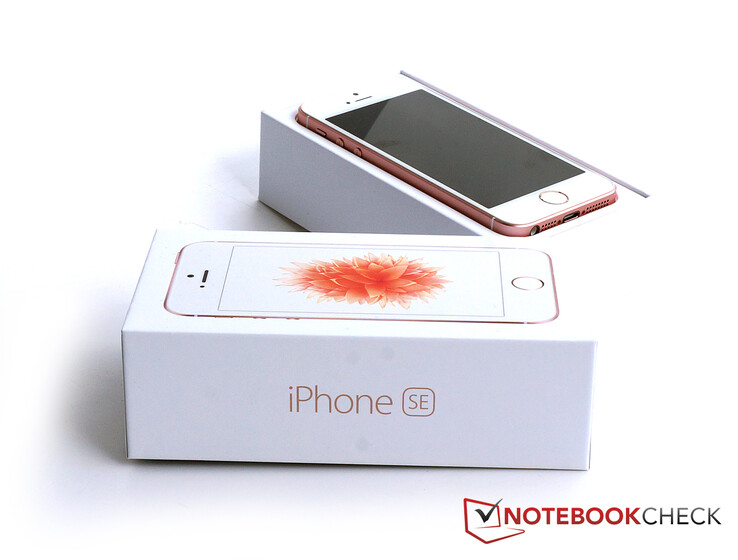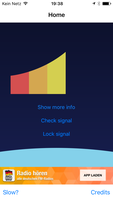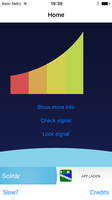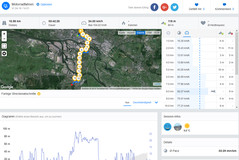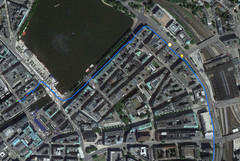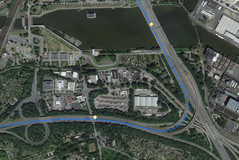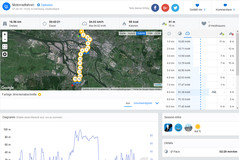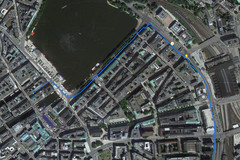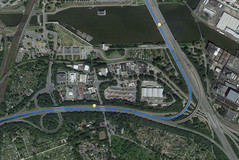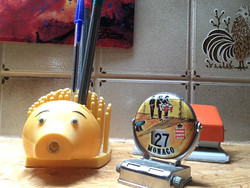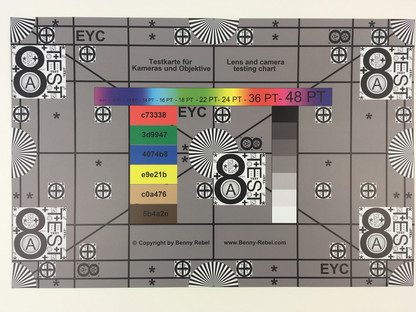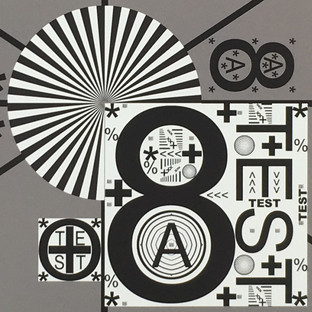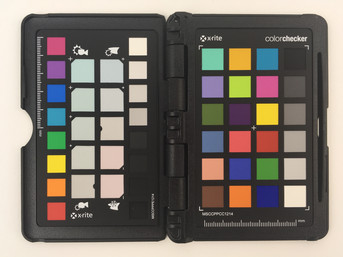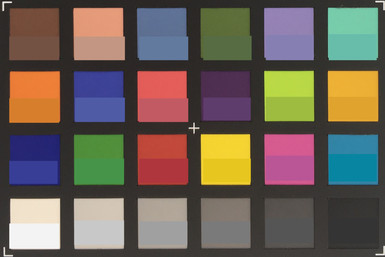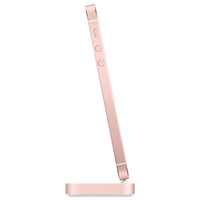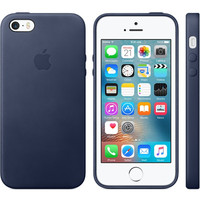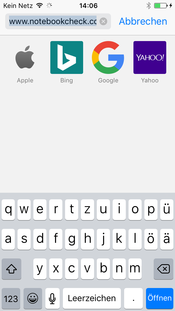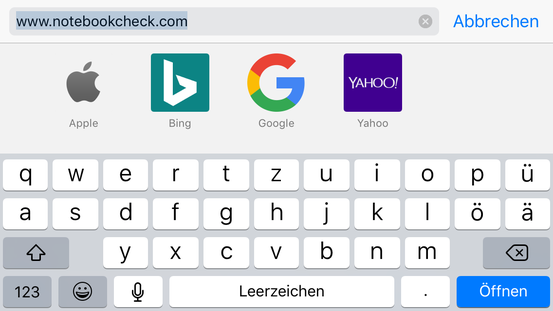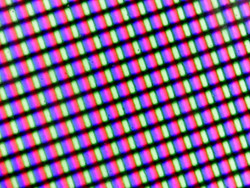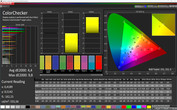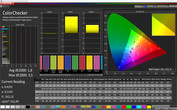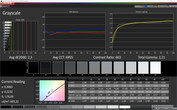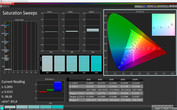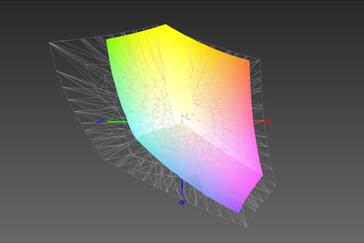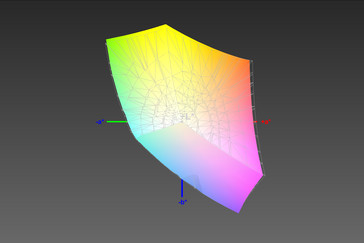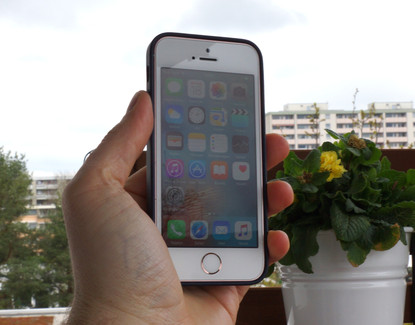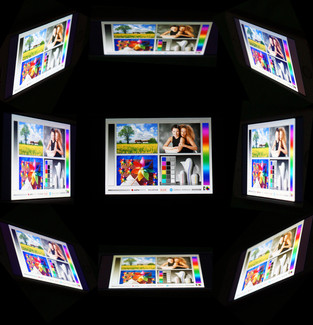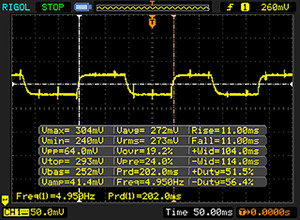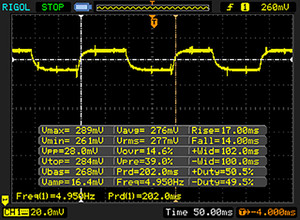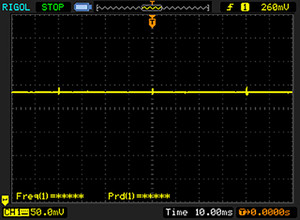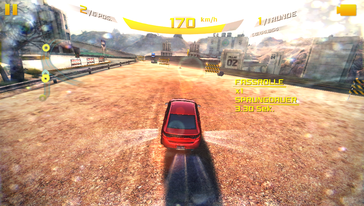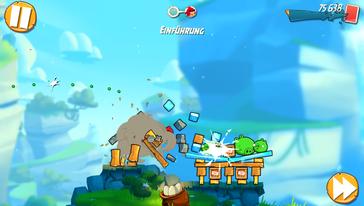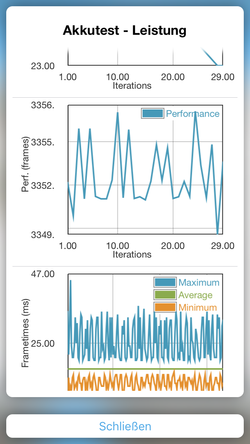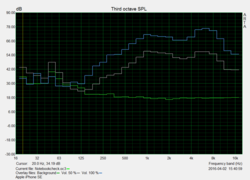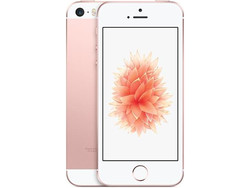Apple iPhone SE Smartphone Review
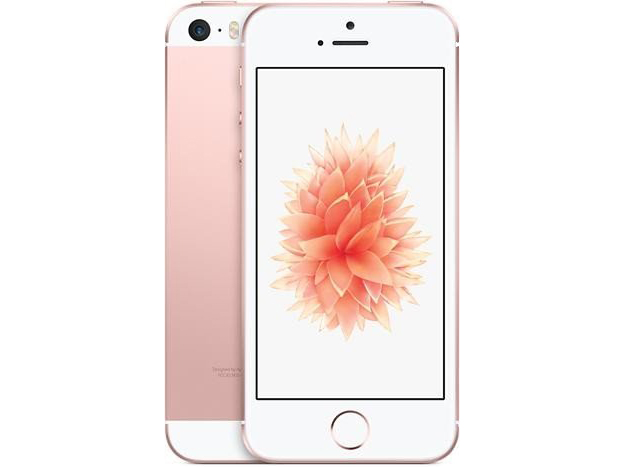
For the original German review, see here.
The iPhone 5c was (for Apple standards) not a big success, but the company tries it once again with a small and (for Apple standards) inexpensive 4-inch smartphone. The iPhone SE seems to have better acceptance on the market based on initial sales figures. More than enough reason for us to have a look at the new baby iPhone.
Apple uses the case design from the iPhone 5S, which was introduced two and a half years ago. The technology, however, was improved significantly with the modern Apple A9 processor. The price is currently 489 Euros (~$551) for the 16 GB and 589 Euros (~$663) for the 64 GB version. But is the 4-inch display not too small?
It is at least a problem to find similarly sized comparison devices, which can also keep up in terms of performance. Sony's Xperia Z5 Compact is certainly one of the most compact rivals and you will currently save about 150 Euros (~$169). It is also interesting how the iPhone SE performs compared to the current "big" iPhone generation with iPhone 6S and iPhone 6S Plus. We also use the Samsung Galaxy S7 as high-end device with Android. Samsung's Galaxy A3 is one of the less powerful smartphones under 5 inches.
Case
You will feel right at home with the new iPhone SE if you ever used an iPhone 5S before – the case is almost identical. There is just a tiny difference: The edges of the iPhone 5S are polished, while they are matte on the iPhone SE, like the rest of the case. Other details like the location of the cameras, the flash at the back or the speaker and stereo jack at the bottom are similar. It probably helps Apple to keep the cost down and sell it for a lower price. New is the color rose gold for the iPhone SE, which was introduced with the iPhone 6S. The usual colors gold, silver and black are obviously available as well.
As per usual for Apple, the case of the iPhone SE is milled from a single piece of aluminum and the build quality is very good. The chassis is once again made of aluminum and glass. Twisting attempts or pressure are no problem for the smartphone, and there are no creaking sounds, either. You can only see some ripples on the screen when you apply a lot of pressure on the display. The buttons on the chassis, which can be pressed, leave a very sophisticated impression and provide good feedback.
At 113 grams (~4.0 oz), the iPhone SE is slightly heavier than the iPhone 5S. Sony’s Xperia Z5 Compact is 26 grams (~0.9 oz) heavier, but also has a bigger screen. The iPhone 5c was much heavier as well. The dimensions are completely identical to the iPhone 5S.
Connectivity
The iPhone SE also gets the fingerprint scanner inside the Home button, but this is pretty much standard for every mainstream smartphone by now. We still like the fact that every Apple smartphone has a dedicated mute button, and the iPhone SE is no exception. There are no physical ports besides the Lightning port and the stereo jack at the bottom corner.
Software
Apple ships the iPhone SE with the latest version of its mobile operating system: iOS 9.3.1. The system now automatically checks the time and adjusts the display correspondingly via color temperature, so you can read the contents more comfortably and it is less tiring for the eyes. The fingerprint scanner can now also be used to protect notes and certain software applications. Apple Health was reworked as well and it is now easier to see the data from the Apple Watch, for example. The usual apps like Maps, Wallet, iBooks, and iTunes are obviously preloaded.
Communication & GPS
Mobile data connections on the iPhone SE are not quite as fast compared to the current iPhone 6S: The maximum LTE speed is 150 Mbps (downstream) and 50 Mbps (upstream), respectively. You do get support for 15 LTE bands, five UMTS and four GSM frequencies in return. You should therefore also be fine when you travel. The signal quality is very good in the metropolitan area, and we could not notice a drop when we covered the antenna with the hand, which was still the case for some older iPhone models.
Wi-Fi connections are supported up to the modern standard 802.11ac. The signal is once again very good: It does not matter if we are standing next to the router (Fritz!Box 6490) or 10 meters (~33 feet) away with three walls in between: The device always indicated all bars and the browsing experience was very fast.
Similar to the iPhone 6S you do get NFC, but it can only be used for Apple Pay, which is currently not yet available in central Europe.
Bluetooth 4.2 is the latest version of the wireless interface and provided a stable signal without dropouts when we streamed music.
The GPS module of the iPhone 6S was very accurate and it was also possible to locate the device indoors. This is possible with the iPhone SE as well and the location is very quick. The signal is much stronger outdoors, and the results correspond with the iPhone 6S.
We also use the iPhone SE on a car ride for a better comparison. Also on board: the professional navigation device Garmin Edge 500. The measured distance only differs by 20 meters (~66 feet) between the two, and the iPhone SE is even more accurate than the Garmin Edge 500 in general. Very good!
Telephone & Voice Quality
The phone app will be familiar for Apple users: Different tabs allow quick access to the favorites, call history, contacts, numbers pad or voicemail. The navigation is very fast and the general handling of the phone app is very intuitive.
The quality of the ear piece is very good: Our call partner is loud and clear, and there are no distortions even at higher volumes. The microphone on our side sounds a bit dull though. The noise suppression is decent in loud environments, but you can sometimes hear ambient noise, which can affect the call quality. We like that the voice is still pretty loud when we increase the distance to the microphone.
Making calls via hands-free feature is also pretty convenient, but the sound is once again better on our side. All in all, we think the voice quality of Sony's Xperia smartphones is a bit better.
Cameras & Multimedia
The camera equipment of the iPhone SE is a mixture between the iPad Pro 9.7 and iPhone 5S. The 12 MP main camera is similar to the iPad Pro 9.7, while the FaceTime camera at the front only has a 1.2 MP sensor like the iPhone 5S.
The FaceTime camera is not up to date anymore with 1280x720 pixels when you consider the popularity of selfies. The pictures are still quite usable and the colors are decent as well.
The main camera of the iPhone SE does not have an optical image stabilizer, but a resolution of 4032x3024 pixels in return. One interesting aspect compared to the iPhone 6S is that the camera of the iPhone SE is not protruding at the back, even though this is probably a result of the 0.5 mm thicker chassis. If you compare the pictures of the iPhone 6S and iPhone SE, the quality is pretty similar and you can find a detailed comparison of the cameras in our review of the iPad Pro 9.7. Compared to other smartphones like the Huawei Mate S or the OnePlus 2, the colors of the iSight camera appear a bit pale. You can clearly see blurry edges when you zoom into the pictures of the iPhone SE and the rivals are better. All in all, the pictures of the iPhone SE do show balanced colors and they are sharp. We also take a picture of our reference chart under controlled lighting conditions and the result is pretty sharp with slightly pale colors. The sharpness is also good when we zoom in.
When we took a picture of the color chart and compared it with the reference colors, we saw that some colors were displayed too bright, and some too dark. We can see a distinct beige hue for gray and white shades in particular.
The main camera can record videos in the 4K resolution at 30 frames per second. Our sample video has an average bit rate of 50 Mbps and appears pretty sharp in general. Only the colors are once again too pale.
Accessories
The iPhone SE is shipped with a power adapter, a Lightning connector USB cable and the "EarPods" headset. There is only a leather case specifically for the iPhone SE on Apple's website so far. It also covers the rear and the sides and retails for 45 Euros (~$51) either in black or dark blue. It is made of real leather, so the quality impression is very good. Thanks to the similar dimensions, you can also use the accessories for the iPhone 5S, which means you will find many cases and protective covers in the online shop. Apple's Lightning Dock is also compatible with the iPhone SE. You can just attach your smartphone and charge it or use the 3.5 mm stereo jack to listen to music. The dock retails for around 60 Euros (~$68). A new power adapter costs 25 Euros (~$28), just like the Lightning cable. There are also numerous accessories on the Internet, which is certainly a big advantage for the iPhone family: You can get camera lenses, thermal imaging cameras, speakers, RC toys and so on.
Warranty
Only 12-months warranty – Apple users are already used to it. You can purchase Apple Care+ to expand your service. It costs 69 Euros (~$78) and includes a 24-month warranty, tips from experts as well as instant replacement. The service also covers two accidental damages.
Input Devices & Handling
As per usual for Apple devices, the touchscreen is very accurate and the glass surface provides good gliding capabilities. Thanks to the well-adjusted resistance of the touchscreen, it sometimes even feels like you would really drag an object across the screen.
The virtual keyboard is obviously comparatively small for today's standards and typos are more common, but it can still be operated very precisely.
Under the screen is once again a TouchID button, but it is still the first generation Apple also used for the iPhone 5S. It works reliably and the setup of TouchID is very simple. You can use it to unlock the device and also authorize purchases in the App Store. The sensor is also the home button when you press it.
Similar to the volume buttons or the standby buttons at the upper sides, the home button is very precise and provides good feedback when you press it. On the left side is once again a lever to deactivate all notifications. It is also easy to feel and use.
Display
Similar to its siblings, the iPhone SE is equipped with a Retina display, but the resolution appears to be low at first. The display, however, is small, so the resolution of 1136x640 pixel still results in 326 PPI. The Sony Xperia Z5 Compact manages slightly more pixels per inch, and the iPhone 6S is on par. Subjectively, the resolution is more than sufficient for the small display. Everything is easy to read, despite the often small fonts in iOS; and you cannot see individual pixels with the naked eye. The brightness distribution is good at 93% and you cannot see brightness differences even on large colored surfaces.
| |||||||||||||||||||||||||
Brightness Distribution: 93 %
Center on Battery: 603 cd/m²
Contrast: 685:1 (Black: 0.88 cd/m²)
ΔE ColorChecker Calman: 1.8 | ∀{0.5-29.43 Ø4.79}
ΔE Greyscale Calman: 2.3 | ∀{0.09-98 Ø5}
96.74% sRGB (Argyll 1.6.3 3D)
62.13% AdobeRGB 1998 (Argyll 1.6.3 3D)
68.1% AdobeRGB 1998 (Argyll 3D)
96.8% sRGB (Argyll 3D)
65.9% Display P3 (Argyll 3D)
Gamma: 2.21
CCT: 6955 K
| Apple iPhone SE A9 / PowerVR GT7600, A9, 64 GB eMMC Flash | Apple iPhone 6S A9 / PowerVR GT7600, A9, Apple AP0064K (iPhone NVMe) | Apple iPhone 6S Plus A9 / PowerVR GT7600, A9, Apple AP0064K (iPhone NVMe) | Samsung Galaxy A3 2016 Mali-T720 MP2, 7578, 16 GB eMMC Flash | Samsung Galaxy S7 Mali-T880 MP12, Exynos 8890, 32 GB UFS 2.0 Flash | Sony Xperia Z5 Compact Adreno 430, 810 MSM8994, 32 GB eMMC Flash | Apple iPhone 5c SGX543MP3, A6, 16 GB iNAND Flash | |
|---|---|---|---|---|---|---|---|
| Screen | -3% | -6% | 2% | -1% | -63% | -6% | |
| Brightness middle (cd/m²) | 603 | 552 -8% | 583 -3% | 386 -36% | 350 -42% | 547 -9% | 572 -5% |
| Brightness (cd/m²) | 579 | 549 -5% | 560 -3% | 394 -32% | 351 -39% | 532 -8% | 537 -7% |
| Brightness Distribution (%) | 93 | 87 -6% | 91 -2% | 88 -5% | 98 5% | 94 1% | 87 -6% |
| Black Level * (cd/m²) | 0.88 | 0.39 56% | 0.46 48% | 0.54 39% | 0.66 25% | ||
| Contrast (:1) | 685 | 1415 107% | 1267 85% | 1013 48% | 867 27% | ||
| Colorchecker dE 2000 * | 1.8 | 3.4 -89% | 3.55 -97% | 1.11 38% | 2.04 -13% | 7.37 -309% | 2.64 -47% |
| Colorchecker dE 2000 max. * | 3.5 | 3.35 4% | 3.25 7% | ||||
| Greyscale dE 2000 * | 2.3 | 4.16 -81% | 3.88 -69% | 1.34 42% | 1.63 29% | 8.39 -265% | 2.97 -29% |
| Gamma | 2.21 100% | 2.21 100% | 2.2 100% | 2.12 104% | 2.07 106% | 2.28 96% | 2.48 89% |
| CCT | 6955 93% | 7288 89% | 7280 89% | 6441 101% | 6391 102% | 9074 72% | 7170 91% |
| Color Space (Percent of AdobeRGB 1998) (%) | 62.13 | 62.18 0% | 59.05 -5% | 86.86 40% | |||
| Color Space (Percent of sRGB) (%) | 96.74 | 95.93 -1% | 92.8 -4% | 99.35 3% | 99.9865 3% |
* ... smaller is better
While the maximum luminance of 603 cd/m² is still convincing, the black value of 0.88 cd/m² is pretty high, so black areas are illuminated quite a bit. This could result in a gray hue for black contents. Our subjective impression of black is good, and we can only see the gray hue at high brightness settings, but it will be easy to see in this case.
The pretty high black value results in a contrast ratio of 685:1; not a great result when you compare it with the rivals. Samsung's OLED panels are obviously in a league if their own since they can completely deactivate black pixels. Colors look pretty crisp on the screen, but they cannot keep up with the vivid colors of OLEDs.
We use a spectrophotometer and the software CalMAN for a more accurate analysis of the picture. Apple's Retina display can convince with very low color deviations compared to the sRGB reference color space, which is covered by 97%. It is also fortunate that we cannot see a blue cast in the grayscale, and the color accuracy convinces as well.
The glossy screen and its reflections on a bright day are a problem for all modern smartphones. Thanks to the high luminance of the screen, however, you can still see the display content of the iPhone SE very well in most situations.
The IPS display is visible from all directions and even from flat angles. Only the brightness will drop a bit from very flat angles, but this is not a big deal in practice.
Display Response Times
| ↔ Response Time Black to White | ||
|---|---|---|
| 22 ms ... rise ↗ and fall ↘ combined | ↗ 11 ms rise | |
| ↘ 11 ms fall | ||
| The screen shows good response rates in our tests, but may be too slow for competitive gamers. In comparison, all tested devices range from 0.1 (minimum) to 240 (maximum) ms. » 47 % of all devices are better. This means that the measured response time is similar to the average of all tested devices (20.3 ms). | ||
| ↔ Response Time 50% Grey to 80% Grey | ||
| 31 ms ... rise ↗ and fall ↘ combined | ↗ 17 ms rise | |
| ↘ 14 ms fall | ||
| The screen shows slow response rates in our tests and will be unsatisfactory for gamers. In comparison, all tested devices range from 0.165 (minimum) to 636 (maximum) ms. » 40 % of all devices are better. This means that the measured response time is similar to the average of all tested devices (31.7 ms). | ||
Screen Flickering / PWM (Pulse-Width Modulation)
| Screen flickering / PWM not detected | |||
In comparison: 53 % of all tested devices do not use PWM to dim the display. If PWM was detected, an average of 8152 (minimum: 5 - maximum: 343500) Hz was measured. | |||
Performance
Apple equips the iPhone SE with the SoC from the iPhone 6S, so it is currently one of the most powerful smartphones. The 64-bit processor inside the Apple A9 runs at 1.8 GHz and only has two cores, which contradicts the common trend towards more processor cores, but it does not seem to be a problem.
Subjectively, the iPhone SE performs really well: Navigating the user interface is extremely smooth, and all the tested apps launched quickly and ran without any issues.
The iPhone SE is at the top of our synthetic benchmarks and is – as expected – on par with the iPhone 6S.
| Geekbench 3 | |
| 32 Bit Multi-Core Score (sort by value) | |
| Sony Xperia Z5 Compact | |
| Samsung Galaxy A3 2016 | |
| Apple iPhone 5c | |
| 32 Bit Single-Core Score (sort by value) | |
| Sony Xperia Z5 Compact | |
| Samsung Galaxy A3 2016 | |
| Apple iPhone 5c | |
| 64 Bit Multi-Core Score (sort by value) | |
| Apple iPhone SE | |
| Apple iPhone 6S | |
| Apple iPhone 6S Plus | |
| Samsung Galaxy S7 | |
| 64 Bit Single-Core Score (sort by value) | |
| Apple iPhone SE | |
| Apple iPhone 6S | |
| Apple iPhone 6S Plus | |
| Samsung Galaxy S7 | |
| AnTuTu v6 - Total Score (sort by value) | |
| Apple iPhone SE | |
| Apple iPhone 6S Plus | |
| Samsung Galaxy A3 2016 | |
| Samsung Galaxy S7 | |
The GPU is a PowerVR GT7600 with a total of six processing clusters and it is currently one of the fastest graphics cards for smartphones. The Samsung Galaxy S7 holds up pretty well, but falls behind the iPhone SE in many of our synthetic benchmarks. All the other comparison devices cannot keep up with Apple's new small smartphone, either, and the iPhone 6S is once again on par.
| GFXBench 3.0 | |
| on screen Manhattan Onscreen OGL | |
| Apple iPhone SE | |
| Apple iPhone 6S | |
| Sony Xperia Z5 Compact | |
| Apple iPhone 6S Plus | |
| Samsung Galaxy S7 | |
| Samsung Galaxy A3 2016 | |
| 1920x1080 1080p Manhattan Offscreen | |
| Samsung Galaxy S7 | |
| Apple iPhone SE | |
| Apple iPhone 6S | |
| Apple iPhone 6S Plus | |
| Sony Xperia Z5 Compact | |
| Samsung Galaxy A3 2016 | |
| GFXBench (DX / GLBenchmark) 2.7 | |
| T-Rex Onscreen | |
| Apple iPhone SE | |
| Apple iPhone 6S | |
| Apple iPhone 6S Plus | |
| Sony Xperia Z5 Compact | |
| Samsung Galaxy S7 | |
| Samsung Galaxy A3 2016 | |
| Apple iPhone 5c | |
| 1920x1080 T-Rex Offscreen | |
| Samsung Galaxy S7 | |
| Apple iPhone SE | |
| Apple iPhone 6S | |
| Apple iPhone 6S Plus | |
| Sony Xperia Z5 Compact | |
| Samsung Galaxy A3 2016 | |
| Apple iPhone 5c | |
Friends of fast web browsing will also be satisfied with the iPhone SE, because no other smartphone can currently keep up with it. Except for the bigger siblings iPhone 6S and iPhone 6S Plus of course. Even websites with complex HTML5 contents are loaded very quickly, and the navigation is very smooth.
| JetStream 1.1 - Total Score | |
| Apple iPhone SE | |
| Apple iPhone 6S Plus | |
| Apple iPhone 6S | |
| Samsung Galaxy S7 | |
| Sony Xperia Z5 Compact | |
| Samsung Galaxy A3 2016 | |
| Octane V2 - Total Score | |
| Apple iPhone SE | |
| Apple iPhone 6S | |
| Apple iPhone 6S Plus | |
| Samsung Galaxy S7 | |
| Sony Xperia Z5 Compact | |
| Samsung Galaxy A3 2016 | |
| Mozilla Kraken 1.1 - Total | |
| Apple iPhone 5c | |
| Samsung Galaxy A3 2016 | |
| Sony Xperia Z5 Compact | |
| Samsung Galaxy S7 | |
| Apple iPhone 6S Plus | |
| Apple iPhone 6S | |
| Apple iPhone SE | |
| WebXPRT 2015 - Overall | |
| Apple iPhone 6S Plus | |
| Apple iPhone 6S | |
| Apple iPhone SE | |
| Samsung Galaxy S7 | |
| Sony Xperia Z5 Compact | |
| Samsung Galaxy A3 2016 | |
* ... smaller is better
Games
The gaming performance of the iPhone SE is very high thanks to the extremely powerful SoC. Games are running even smoother thanks to the low resolution of 1136 x 640 pixels. There are no waiting times in the menus of Asphalt 8: Airborne, the loading times are very short and the racing game runs completely smooth. A 2D game like Angry Birds 2 is also completely smooth and the loading times are short. However, we have to be fair and say that the control elements are sometimes pretty small on the small display and there is less room compared to bigger smartphones when you also use two fingers to control the game. However, you will get used to it.
Controls via touchscreen and position sensor were no problem and very smooth. You can even play the most demanding games from the App Store since the iPhone SE is one of the most powerful smartphones from Apple. Most upcoming games should not be a problem, either.
Emissions
Temperature
If you use your smartphone all day long, it should feel comfortable in the hands and not get too hot. This was the case for the iPhone 5S, but Apple now implemented a much faster processor into the same chassis. Can this work?
A practical all-day scenario, which should roughly be represented by our idle test, does not result in a lot of heat, and the iPhone SE actually stays a bit cooler than iPhone 5S (even though we used another measurement device this time). Up to 30.9 °C (87.62 °F) are hardly perceptible, and the metal chassis will be probably warmed up more by the temperature of the hand.
We can, however, measure much higher temperatures under load compared to the iPhone 5S, so the additional performance of the iPhone SE is noticeable. Up to 44.2 °C (111.56 °F) are not yet unpleasant, but clearly perceptible. The iPhone 5S was much cooler with up to 39.5 °C (103.1 °F), while the iPhone 6S reaches similar values. The heat development of the iPhone SE is once again concentrated on the top of the smartphone around the FaceTime camera in particular and is lower towards the bottom. Surprisingly cool is the power adapter with up to 40.5 °C (104.9 °F).
We use the GFXBench Battery Test to check the performance under sustained load. It repeats the same test thirty times and logs the frame times. They do not vary a lot even in the 30th run, so we can assume that the performance of the iPhone SE is steady even after sustained load.
(±) The maximum temperature on the upper side is 44.2 °C / 112 F, compared to the average of 35.2 °C / 95 F, ranging from 21.9 to 247 °C for the class Smartphone.
(±) The bottom heats up to a maximum of 42.8 °C / 109 F, compared to the average of 34 °C / 93 F
(+) In idle usage, the average temperature for the upper side is 27.9 °C / 82 F, compared to the device average of 32.9 °C / 91 F.
Speakers
The speaker of the iPhone SE can actually still keep up with modern high-end devices. Even though the maximum volume of 83 dB(A) could be higher, we like the balanced sound. You can even notice some bass and the sound is much richer compared to the speaker of the OnePlus 2, for example. We cannot notice distortions or irregularities at the highest volume settings. The position at the lower edge of the smartphone is used by many modern smartphones and is better than the position at the back, because it is harder to cover the speaker. The iPhone SE cannot keep up with the sound of HTC's One models, but the result is still impressive for a small smartphone and it is on par with the Sony Xperia Z5 Compact.
The provided EarPods are still very decent in-ear headphones, which produce a clear sound even at higher volumes, but they could have more bass depending on the music genre. They can also be pretty slippery for some users due to the smooth surface. The iPhone SE also delivered a clear and – if desired – also pretty loud sound with other headphones and headsets we tested.
Energy Management
Power Consumption
How much power does the iPhone SE consume? The consumption should be lower than the iPhone 6S because of the smaller display and the same SoC, but higher than the iPhone 5S because of the higher performance. Our measurements actually confirm our assumptions: The iPhone SE consumes much less power than the iPhone 6S while idling, but it consumes much more under maximum load: We can measure up to 6.46 watts for the iPhone SE.
Apple's iPhone SE has a clear advantage over fast Android smartphones, but you once again have to consider the smaller panel. Still: 38% less power in total compared to the Sony Xperia Z5 Compact is impressive, and we can once again see the biggest difference under load.
| Off / Standby | |
| Idle | |
| Load |
|
Key:
min: | |
| Apple iPhone SE A9 / PowerVR GT7600, A9, 64 GB eMMC Flash | Apple iPhone 5S PowerVR G6430, A7, 16 GB eMMC Flash | Apple iPhone 6S A9 / PowerVR GT7600, A9, Apple AP0064K (iPhone NVMe) | Apple iPhone 5c SGX543MP3, A6, 16 GB iNAND Flash | Sony Xperia Z5 Compact Adreno 430, 810 MSM8994, 32 GB eMMC Flash | Samsung Galaxy A3 2016 Mali-T720 MP2, 7578, 16 GB eMMC Flash | Samsung Galaxy S7 Mali-T880 MP12, Exynos 8890, 32 GB UFS 2.0 Flash | |
|---|---|---|---|---|---|---|---|
| Power Consumption | 12% | -6% | 23% | -38% | -11% | -18% | |
| Idle Minimum * (Watt) | 0.54 | 0.6 -11% | 0.5 7% | 0.4 26% | 0.6 -11% | 0.96 -78% | 0.68 -26% |
| Idle Average * (Watt) | 1.26 | 0.8 37% | 1.6 -27% | 1 21% | 1.4 -11% | 1.39 -10% | 1.02 19% |
| Idle Maximum * (Watt) | 1.4 | 1.6 -14% | 1.9 -36% | 1.3 7% | 1.7 -21% | 1.45 -4% | 1.14 19% |
| Load Average * (Watt) | 2.45 | 2.3 6% | 2.5 -2% | 2.2 10% | 5.3 -116% | 2.65 -8% | 4.73 -93% |
| Load Maximum * (Watt) | 6.46 | 3.8 41% | 4.8 26% | 3.3 49% | 8.4 -30% | 3.51 46% | 7.16 -11% |
* ... smaller is better
Battery Runtime
The iPhone SE with its 6.21 Wh battery is not beaten in our realistic Wi-Fi scenario: 11:13 hours are determined by our script before the battery is empty. Only the Samsung Galaxy A3 can somewhat keep up. However, most comparison devices have an advantage under load and while idling, so it comes down to your usage scenario. We found the battery runtime of the iPhone SE to be pretty enduring over the course of our review and the runtimes are not really bad in any category.
| Apple iPhone SE A9 / PowerVR GT7600, A9, 64 GB eMMC Flash | Apple iPhone 6S A9 / PowerVR GT7600, A9, Apple AP0064K (iPhone NVMe) | Apple iPhone 6S Plus A9 / PowerVR GT7600, A9, Apple AP0064K (iPhone NVMe) | Apple iPhone 5c SGX543MP3, A6, 16 GB iNAND Flash | Sony Xperia Z5 Compact Adreno 430, 810 MSM8994, 32 GB eMMC Flash | Samsung Galaxy A3 2016 Mali-T720 MP2, 7578, 16 GB eMMC Flash | Samsung Galaxy S7 Mali-T880 MP12, Exynos 8890, 32 GB UFS 2.0 Flash | |
|---|---|---|---|---|---|---|---|
| Battery runtime | -13% | -1% | -16% | 6% | 36% | 10% | |
| Reader / Idle (h) | 21.2 | 25.2 19% | 27.6 30% | 18.8 -11% | 37.5 77% | 33 56% | 30.2 42% |
| H.264 (h) | 12.7 | 11.7 -8% | 11.9 -6% | 8.8 -31% | 14.4 13% | 14.9 17% | |
| WiFi v1.3 (h) | 11.2 | 8.2 -27% | 8.6 -23% | 7.3 -35% | 10.5 -6% | 7.6 -32% | |
| Load (h) | 3.5 | 2.3 -34% | 3.3 -6% | 2.8 -20% | 4 14% | 6.3 80% | 4 14% |
| WiFi (h) | 14.4 |
Pros
Cons
Verdict
Apple still loves building compact smartphones, even though the last generations grew considerably. The iPhone SE (which is short for Special Edition) goes back to the roots and revives the hardly used 4-inch form factor. Not only children will be happy about this, but all users who prefer this size and did not have a lot to choose from so far.
The iPhone SE is similar to the iPhone 6S in many respects and also surpasses the iPhone 6 or 6 Plus, which are still available, in terms of performance, 4K video recordings and the battery runtime, for example. The stamina even beats the iPhone 6S and is on par with the iPhone 6S Plus. Fast communication modules, the good display, decent cameras and good software are other advantages of the iPhone SE.
If you are looking for a compact smartphone without sacrificing performance, the iPhone SE will be a great overall package. The device, is, however, probably too expensive and fragile for price-conscious users and outdoor fans.
Outdoor fans will still have issues with the scratch susceptible surface, the glass that can easily break and the missing IP certification. There are numerous accessories on the Internet for these purposes, but the iPhone SE is – similar to its predecessors – more of a nicely dressed indoor device than an adventure tool. You can still not expand the storage or replace the battery.
If you do not like Apple, the iPhone SE will not convince you, but all other users will once again get a nice and powerful device with a compact and light case.
Apple iPhone SE
- 09/27/2019 v7 (old)
Florian Wimmer




